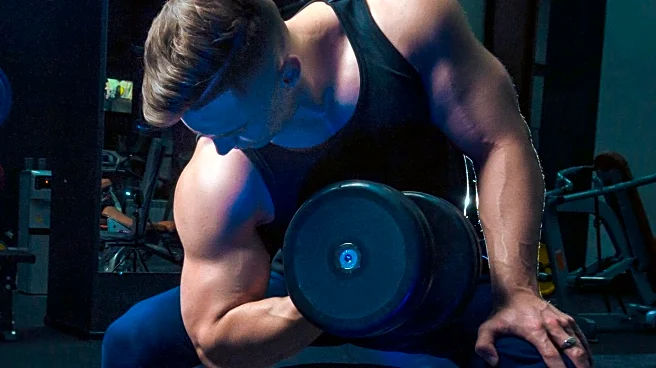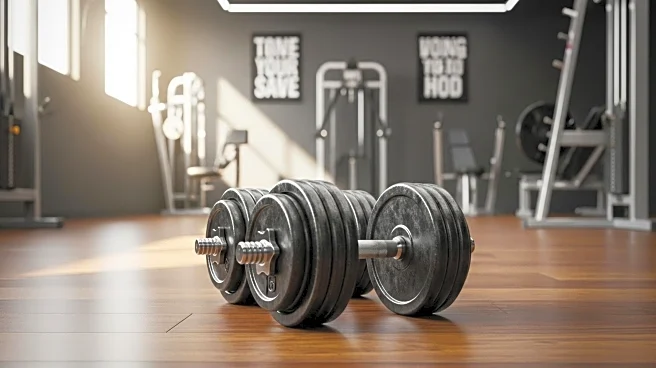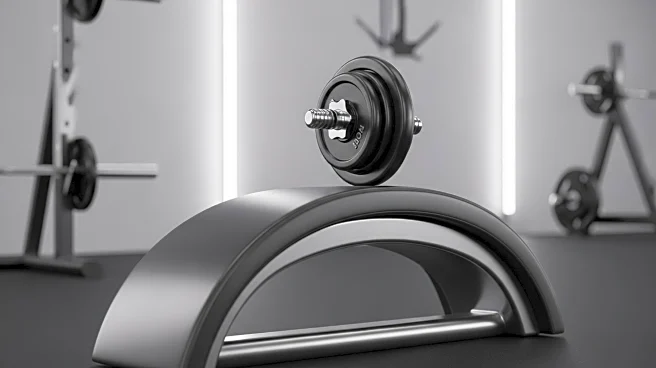What's Happening?
A recent study published in the Journal of Bodywork and Movement Therapies has found that both free weights and machines are equally effective in promoting muscle hypertrophy among previously untrained individuals. The study involved eight participants who trained their knee extensor muscles using either free weights or machines over a nine-week period. Muscle growth was measured using ultrasound, focusing on the quad muscles, specifically the rectus femoris and vastus lateralis. Results showed significant muscle size increases at all measured points, with no notable differences between the two training methods. This research challenges the long-standing debate between the effectiveness of free weights versus machines, suggesting that both can be beneficial for muscle growth.
Why It's Important?
The findings of this study have significant implications for the fitness industry, particularly for individuals new to strength training. It suggests that access to a full gym setup is not necessary for effective muscle growth, which could democratize fitness by making it more accessible to those with limited resources. This could lead to increased participation in strength training, potentially improving public health outcomes. Additionally, the study supports the idea that personal preference and convenience can guide equipment choice without compromising results, which may influence gym equipment manufacturers and fitness program developers.
What's Next?
The study's results may prompt further research into the comparative effectiveness of different training modalities, potentially influencing fitness guidelines and recommendations. Fitness centers might consider diversifying their equipment offerings to cater to varied preferences without prioritizing one method over the other. Trainers and fitness professionals may also adjust their advice to clients, emphasizing the importance of consistency and personal comfort in training choices.
Beyond the Headlines
This study could lead to a shift in how fitness is marketed and perceived, moving away from the notion that expensive equipment is necessary for effective training. It may also encourage more inclusive fitness environments, where individuals feel empowered to choose their preferred method of training without judgment.











